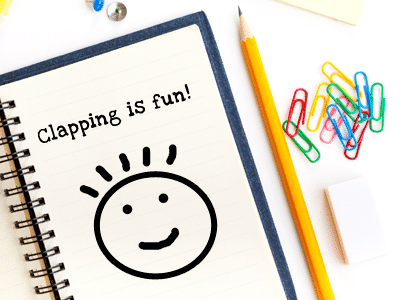How do you slow down a hyperanticipatory client?

Question:
Can you recommend some strategies for clients who tend to be hyper-anticipatory (or consistently hit too early) and have significant difficulty slowing down to be more in sync with the reference tone?
Answer:
If your client has the idea that he is supposed to try to hit on the beat, he has mastered Phase 1 of IM training (even though he is hitting too early and his scores are not where you want them to be).
It appears that your client may need feedback about his timing in order to slow down and get into sync. Depending upon how well your client attends in distractions and how well your client can process auditory information, you may try some of these approaches (if one approach does not work for your client, reassess the situation and try another of the strategies):
- Move to Phase 2 and turn on the guide sounds. Encourage your client to counteract his tendency to hit early by purposely clapping at a slightly slower rhythm. Provide verbal cues as needed to maintain a slower rate of clapping. If it helps, you can use a low distraction Training Visual such as a white, black or blue background along with the IM scores, without the center flash (for IM Universe). If you are using IM 6.0 or later, then use the screen with the scores and no center flash. Some clients will understand and benefit from the concept of “counteracting” their timing tendency while others will not. Use your professional judgment.
If necessary, when the guide sounds are turned on, set the Difficulty at an easier level that is based upon your client’s Task Average (i.e., set the Difficulty about 50-100ms higher than your client’s best Task Average if your client’s Task Average is 250ms, then you would set the Difficulty at the highest/easiest setting of 300).
Use the Training Visuals to provide more concrete cues about performance “it is best to select the least distracting screen and one that shows the scores along with red for very early/very late, yellow for early/late, and green for SRO hits.
If you think it will help your client focus better, you may opt to turn down the volume on for the Right-On and SRO guide sounds so that the Guide (buzzer) stands out more and serves as a boundary to stay within.
* If necessary, you can add a post-it note on the left side of the computer screen that says “slow down” to remind your client to slow down…or you can provide verbal or physical hands-on cues as needed. You may need to train for a period of time with total hands-on assist, then wean from your physical cues as your client demonstrates better performance.
- If your client demonstrates difficulty with impulse control and the above strategies have not been effective, you may opt to turn down the tempo to 30 bpm. Use the Training Visuals, selecting a low distraction screen as described above. Tell your client not to clap until “after” he has heard the reference tone each time (so he hears the beat, THEN claps). All of his hits should be in the yellow or red zone on the right side of the screen indicating LATE or VERY LATE hits. Do this for a significant number of repetitions or repeat this exercise frequently if attention span is short.
* Once your client masters this exercise, repeat a Short Form Test to see if your client’s performance is carrying over to the default Tempo of 54 bpm. Typically, after a period of such training, even the most impulsive client will demonstrate improved performance on Both Hands at 54 bpm.
Another strategy is to set up 2 hand triggers, one positioned on your clients left side and the other on the right side (for example, they may be attached to the wall with Velcro). If you position them so that your client has to take a step to the left to reach the trigger on the left, then a step to get back to the starting point, then another step to the right to reach the trigger on the right”¦ alternating between tapping the trigger on the left then the trigger on the right, step-step-tap, step-step-tap. By imposing a physical delay, your client CANNOT hit the trigger way too early!
* After training in this manner for a period, re-administer the Short Form Test at 54 bpm with the usual clapping of Both Hands to determine the extent of carryover for better timing and self-regulation.
Some have reported that their client was more focused and exhibited better self-regulation and impulse-control when a sensory approach was taken for IM training (i.e., incorporating calming strategies to help focus and center the individual). This is particularly important if working with a client who displays Sensory Processing Disorder (whether formally diagnosed or not) or a client who is on the Autism Spectrum. These clients may be overly sensitive to certain aspects of IM, such as volume and wearing the headphones and/or hand glove/button switch.
There are also reports that turning off the IM sound (or removing the headphones) and having the client perform IM with the Training Visual screen only (must be scored with center flash with the least distracting background like a solid color) is effective. In this instance, your client will use the center flash as a stimulus for the reference beat and will use the feedback provided on the screen (early, late and SRO hits) to synchronize.


